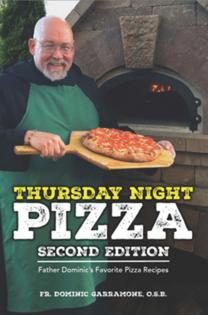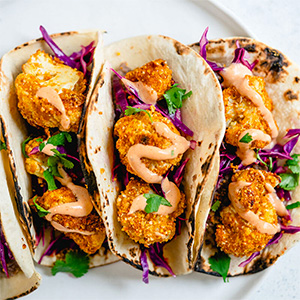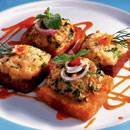Column: Father Dominic's new book cooks up a world of pizza varieties
Published in Variety Menu
Father Dominic Garramone knows all about pizza snobs, people who loudly insist that only certain ingredients belong on a pizza. He is not a pizza snob.
“I don’t particularly care for Provel, but I don’t look down my nose at it. I don’t care for barbecue pizza or pineapple on pizza, but if you want to put that on your pizza I’m not going to look at you like you’re a barbarian,” he says.
“As someone who puts sherry cream sauce and grape halves on a pizza, I’m in no position to look down on anyone else for their choices.”
Garramone is out with a new book, “Thursday Night Pizza,” with more than 50 recipes for pizza, pizza dough, pizza sauce and other pizza-adjacent foods. It’s actually the second edition of a book that first came out in 2010, but with one new chapter and at least 20 more recipes.
Garramone is also a monk at St. Bede Abbey in Peru, Illinois, a hundred miles southwest of Chicago. He is the chaplain and head of the religion department at the high school run by the monastery, St. Bede Academy.
He is a pizza-baking Benedictine monk, and in some circles he is something of a minor celebrity. Twenty-five years ago, he had a show on KETC, St. Louis’ public television station. “Breaking Bread with Father Dominic” ran for three seasons and then another three seasons in reruns.
At a time when most Americans only knew about a few types of bread, the show revealed how to bake examples from around the world.
“I’m more likely to make tuna casserole than beef bourguignon, but in terms of bread I’ll go anywhere, I’ll explore anything,” he says.
And that’s his attitude toward pizza, too. His book includes recipes for muffuletta pizza inspired by the famous New Orleans sandwich, a gourmet pizza with asparagus and Mornay sauce, a regional German flammkuchen and a Denver diner pizza, which features everything that goes into a Denver omelet, including the eggs.
His Piggy in the Vineyard, which is the pizza with the sherry cream sauce and the grapes — along with ham, gouda cheese, honey and thyme — was partly inspired by a pasta dish with sherry cream sauce at Vito’s Sicilian Pizza & Ristorante on Lindell Boulevard in Midtown.
“The thing that I like best about pizza is that it tends to be a community food. There are many people, including myself, who can eat a whole pizza by himself. But you don’t say, “I’m going to get a pizza.” You say, “Let’s get a pizza.”
It is in that spirit that he often bakes pizza for his brethren in the monastery and at various charitable events around the town of Peru.
“Building the bonds of brotherhood. Pizza does that marvelously well,” he says.
The book begins with a thoughtful discussion of the differences between American- and Italian-style crusts. American crusts are made with milk or olive oil plus a little sugar to make the yeast act faster; they are a little sweet, with a tender crumb. They can also hold up under piles of toppings.
Italian-style crusts are meant for limited toppings. Made only from flour, yeast, salt and water, they can be cooked at a very high temperature for a short period of time, and they char and blister more readily than the American version. Because the dough is wetter than American-style dough, they have to be stretched with your hands.
“You don’t toss it in the air. Tossing the crust is not an Italian thing,” he says.
When pizza began its invasion of New York in the 1940s, pizza joints were often opened in storefronts. The pizza-maker would toss the dough in the front window, “kind of like a carnival barker,” he says.
For Garramone, a good pizza sauce should ideally be made from fresh tomatoes. When tomatoes aren’t in season, he makes sauce from canned crushed tomatoes, or he puts canned diced or canned whole tomatoes in a food processor. The results are better than anything you can buy in a store.
Basil is fine for a tomato sauce if it is going to be used with pasta, he says, but oregano is the most important herb for pizza sauce.
“The trick is to use it very sparingly,” he says. Too much will overwhelm the sauce.
And he has catholic taste, so to speak, in his choice of cheeses to go on a pizza’s top. Though he often chooses the traditional mozzarella, either fresh or processed, he is not afraid to pick anything from manchego to gouda to baby Swiss cheese. Depending on the toppings, he will sometimes select a smoked cheese to add an extra smoky kick to the combination of flavors.
The point is to experiment, to try new things. The point is to expand the concept of pizza. The point is to not be a pizza snob.
There is only one kind of pizza he will not make, and it is for a good reason.
“I will never make a taco pizza, ever, in my whole life,” he says. “That’s because tacos are perfect as they are.”
©2024 STLtoday.com. Distributed by Tribune Content Agency, LLC.










Comments